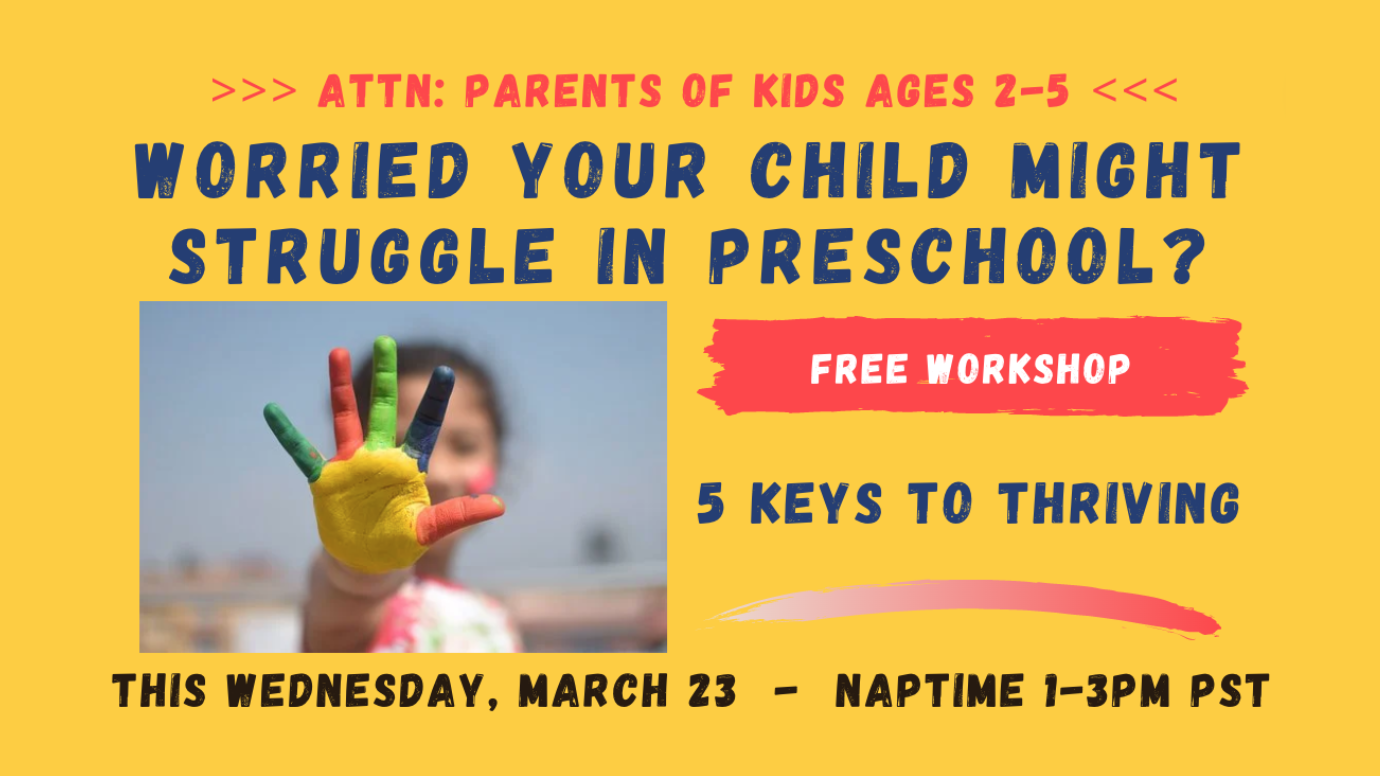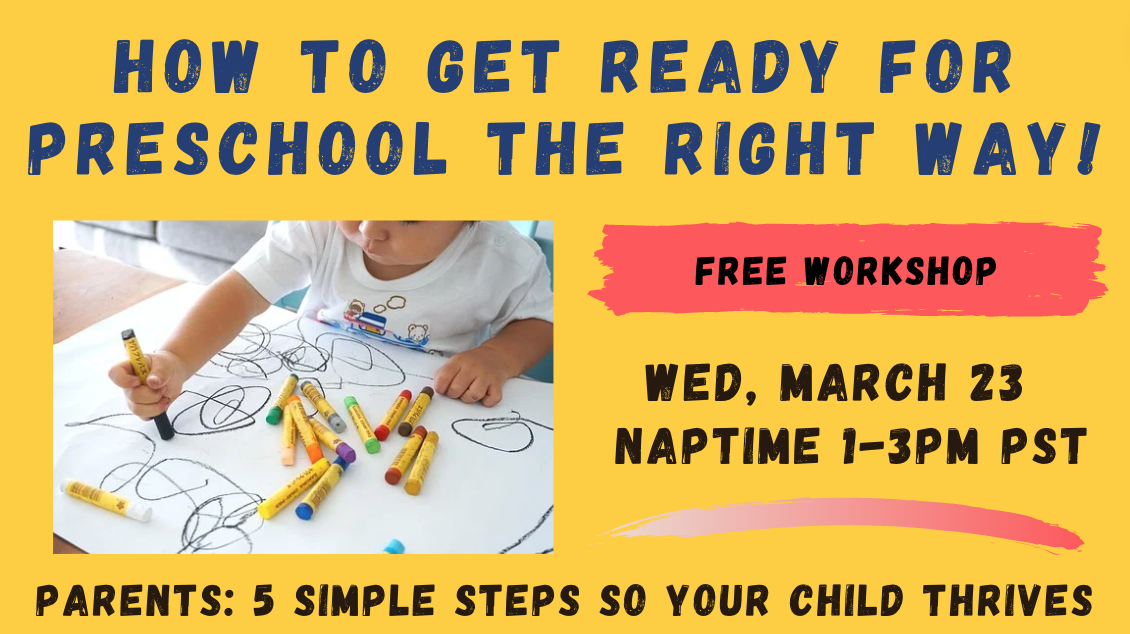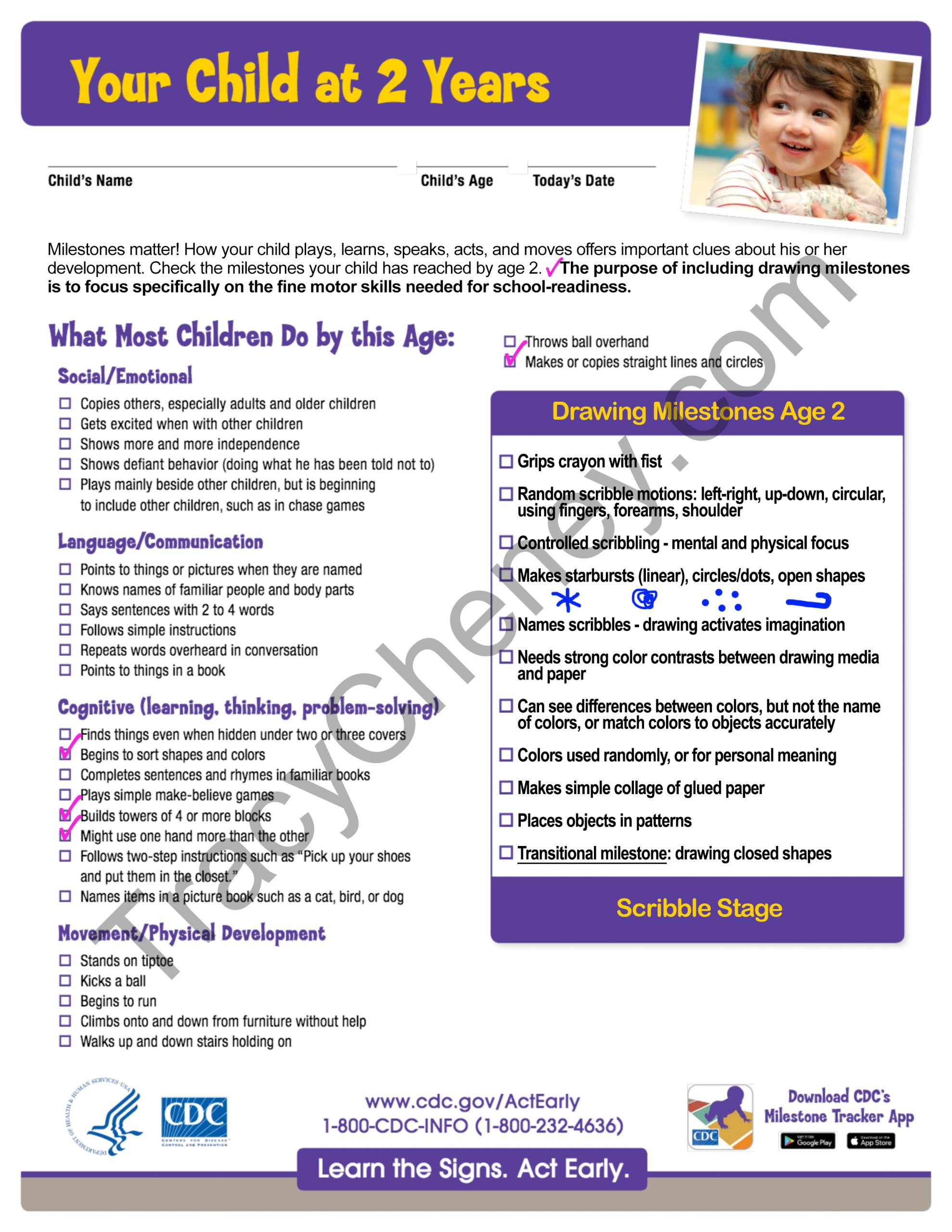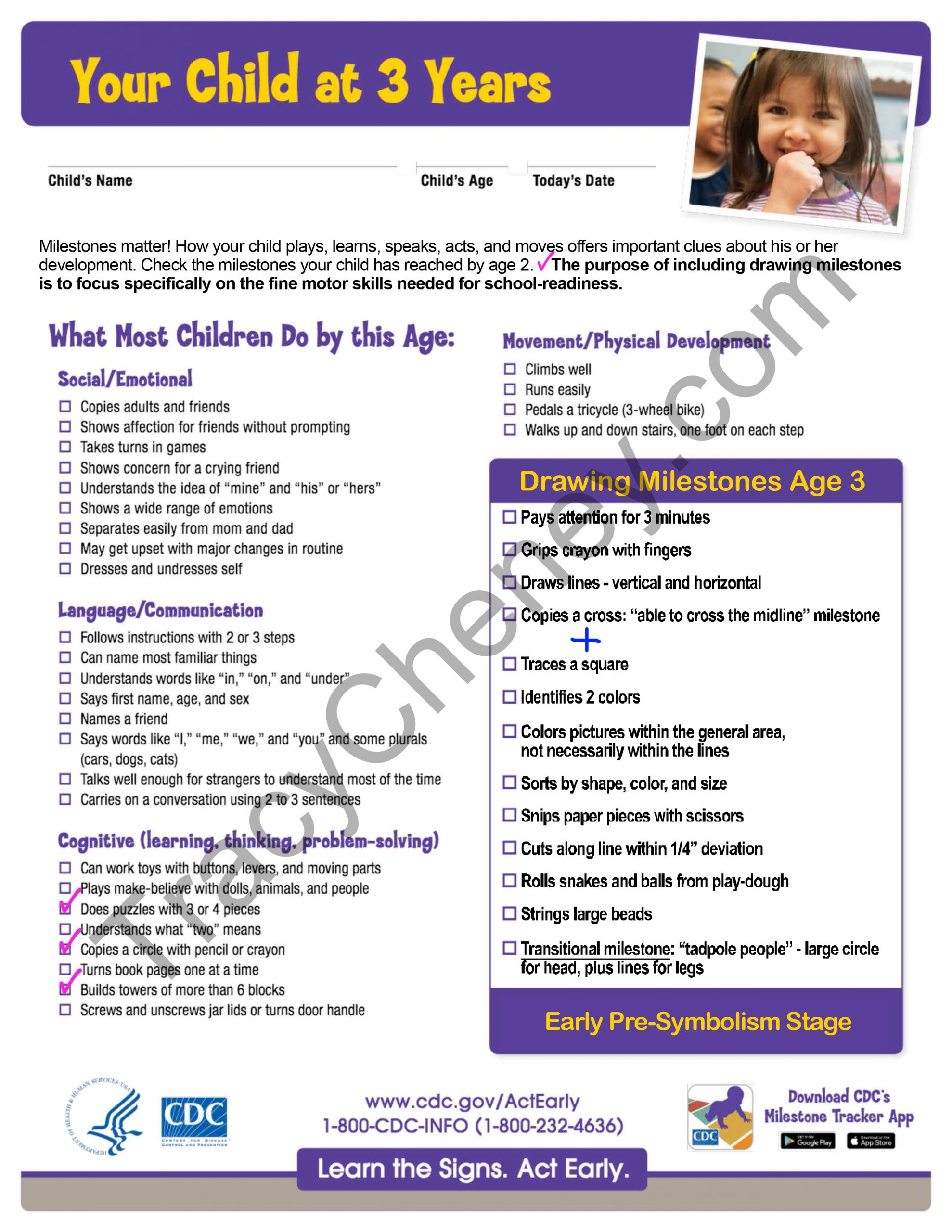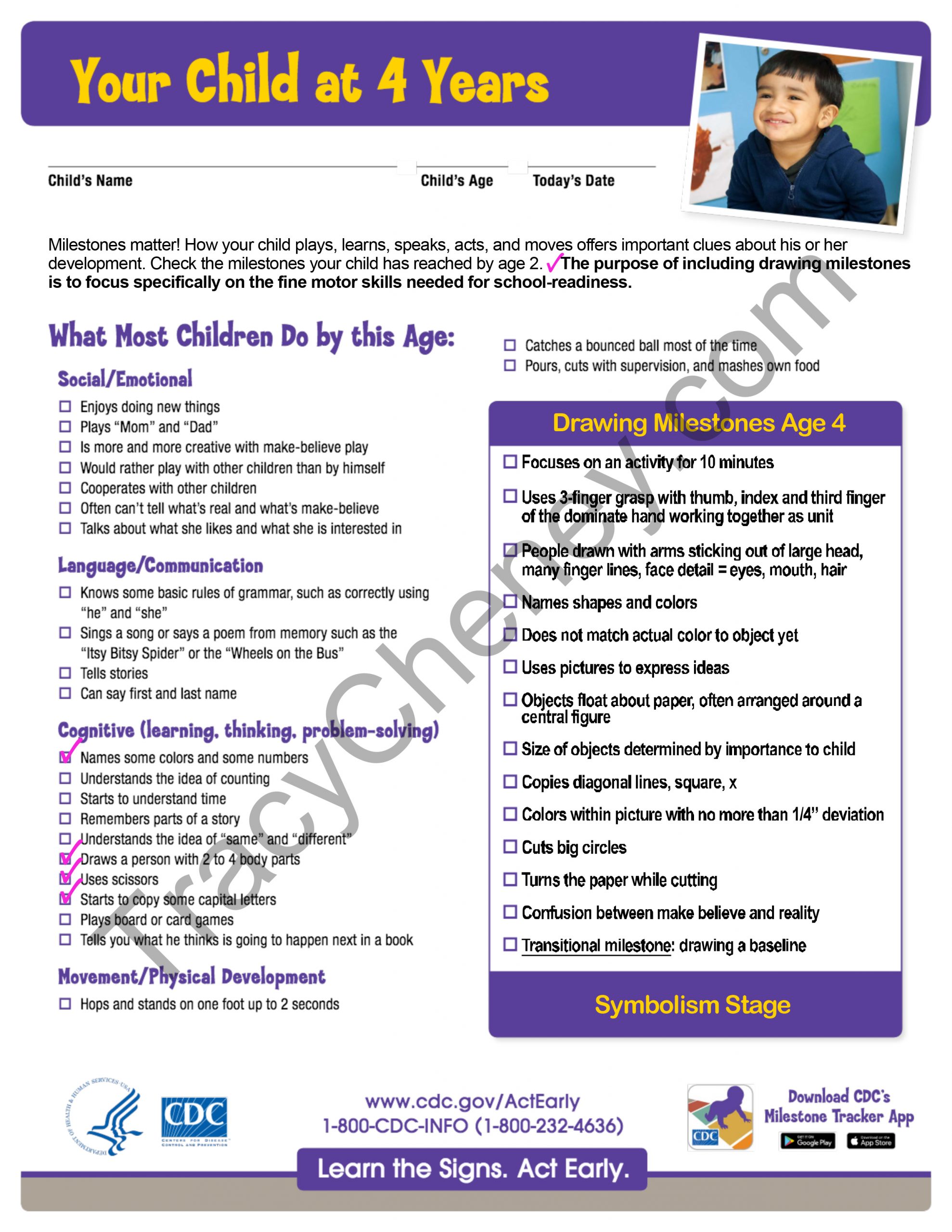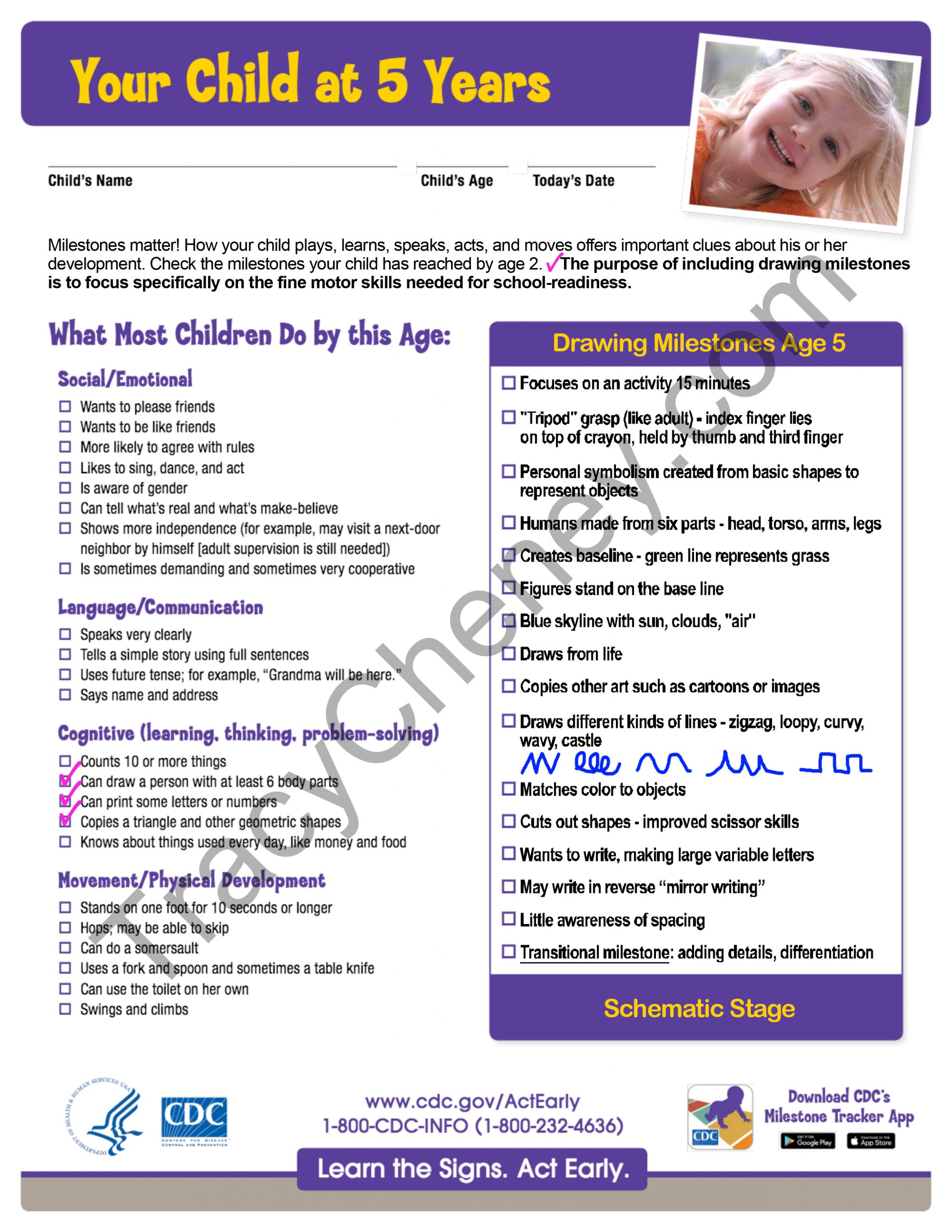GOOD STUFF
Child Development Charts, ages 2-5
OR buy the whole bundle
Schools and early childhood workers use these development charts created by the CDC to measure children’s progress. I included them in my preschool book, where you’ll find them inside it. Or you can purchase them here for your use.
I’ve amplified these charts to highlight specifically the drawing development that should be taking place at each age. That’s what I’ve put in the box for you. These are the marks I look for in a child’s artwork. The CDC alludes to a few in general terms; you can see where I’ve checked those in bright pink. However, I’ve found this doesn’t help most ECD teachers and parents know what to look for.
It’s been shocking to me to see the development in some preschools to provide art time as a “choice” among several centers, with little ones being able to skip it entirely. This is focused thinking, choice-making, and fine motor skill developmen time. Does that mean when a child goes home, parents are providing ample drawing time for children to develop mark-making skills and thinking?
I think the lack of art time is the result of several factors: a short school day, lack of training of this importance at the college prep level for early childhood teachers, the push for “academics” for little children without recognizing that drawing is academic for them, pushing writing before children have enough crayon/pencil experience.
Nothing on these development charts happen magically. Children need lots of practice to grow into the next level.
Schools may use these charts as one or the sole indicator to assess whether your child is ready to attend. But I feel an important insight is gained by asking children to draw a picture of their family. It so clearly indicates their development level and readiness for school.
How Children Draw People
Want to know what to look for? You can download my free “children’s stages of drawing people” that are universal in child development…when children are given the time over years to draw. They have to come to this themselves.
Drawing=thinking. It’s an internal thought process first, driven by desire! Don’t disrupt or short-circuit it; this ability leads directly to being ready to learn more subjects taught in school.
It is so exciting to watch little humans begin to draw the thing most important to them — you! Those first exploratory efforts to draw a circle is capturing what they’ve grown up seeing very close from the day they were born — your face! I love those early “tadpole” people. Your child is very short, you are tall with giant legs from their perspective. See how observant they have been from the start (I plead with you not to put screens in front of those curious eyes!)
With years of practice and observation, your child will keep drawing through very distinct stages. It doesn’t matter if they start at age three or five, as they will still have to work through these stages of drawing development. They can’t be skipped. Or leap-frogged over. That lack will affect them in a number of ways. Which breaks my heart.
The goal is to allow young children to draw as they show interest in materials. It’s so evident in the classroom who has had this kind of preparation. Starting early enough means the kiddos have naturally drawn their way to the drawing stage appropriate to handle the work of Kindergarten.
Use this handy tool to access where your child’s thinking about this topic has developed so far. Don’t try to “improve” them. It’s an inside job, which happens to develop those important fine motor skills needed later for writing.
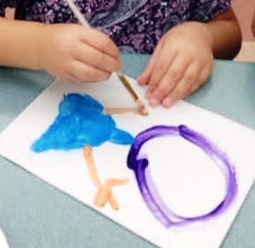
Color Mr. Doodly!
Here’s the future video star, Mr. Doodly!
My desire is to get parents and kids into the habit of doodling and reading aloud each day. Ten minutes! Which I’m sure will naturally extend into some focused drawing time.
I intend to combine both activities for the really small ones in a future YouTube video series. Mr. Doodly will be there. As will I! These will be short segments designed for their attention span. I look forward to sharing some of my favorite art books from the library. These are books that I enjoyed reading to my classes over the years. I know your child will find inspiration in them.
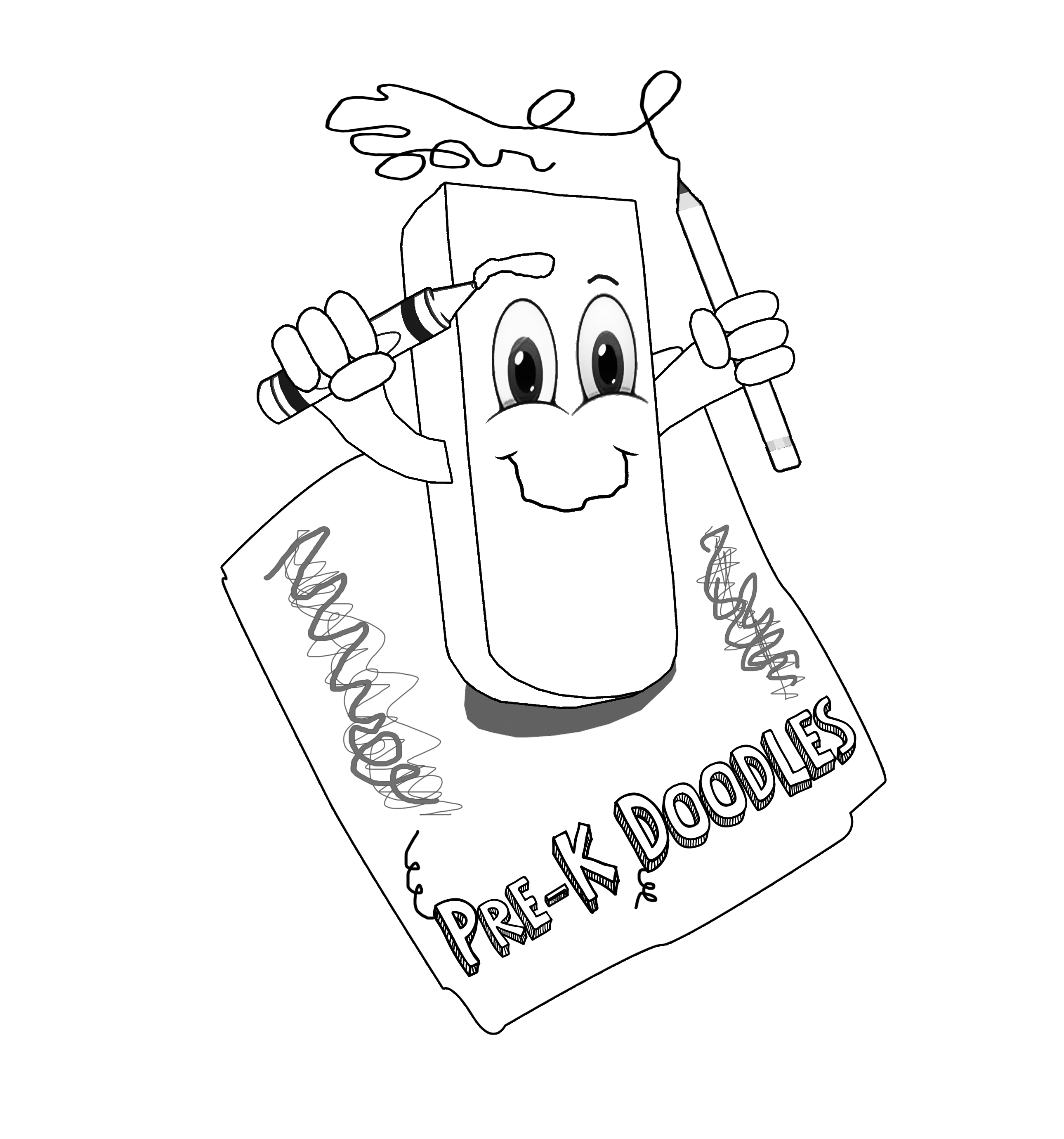
Workshop For Moms
